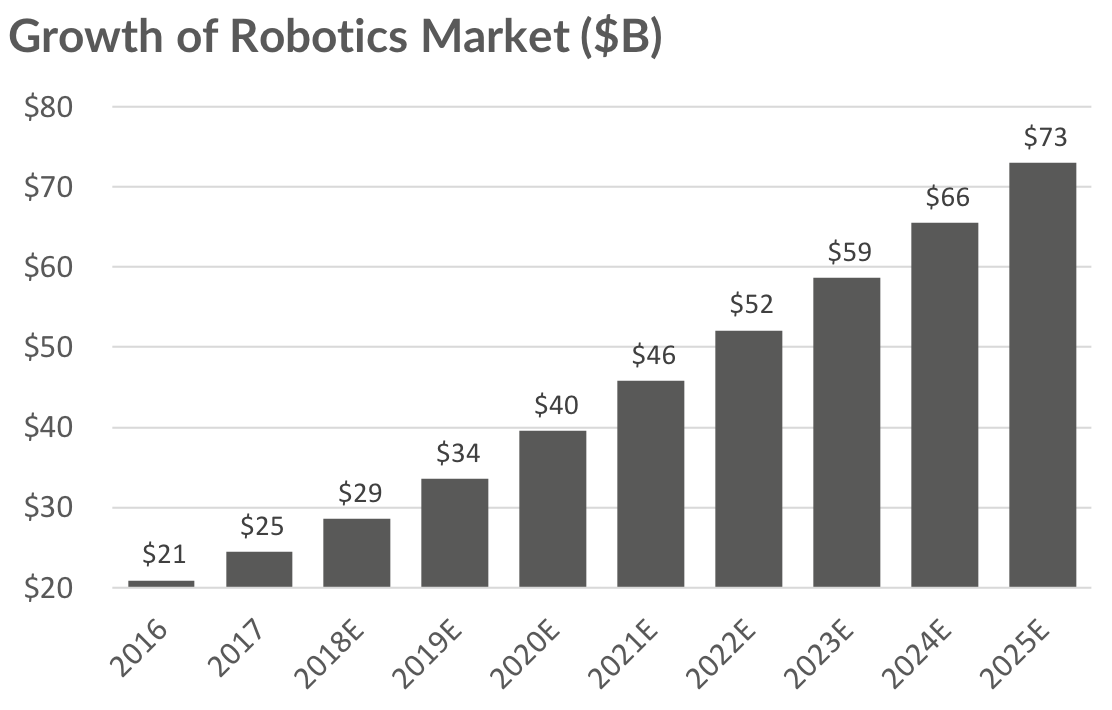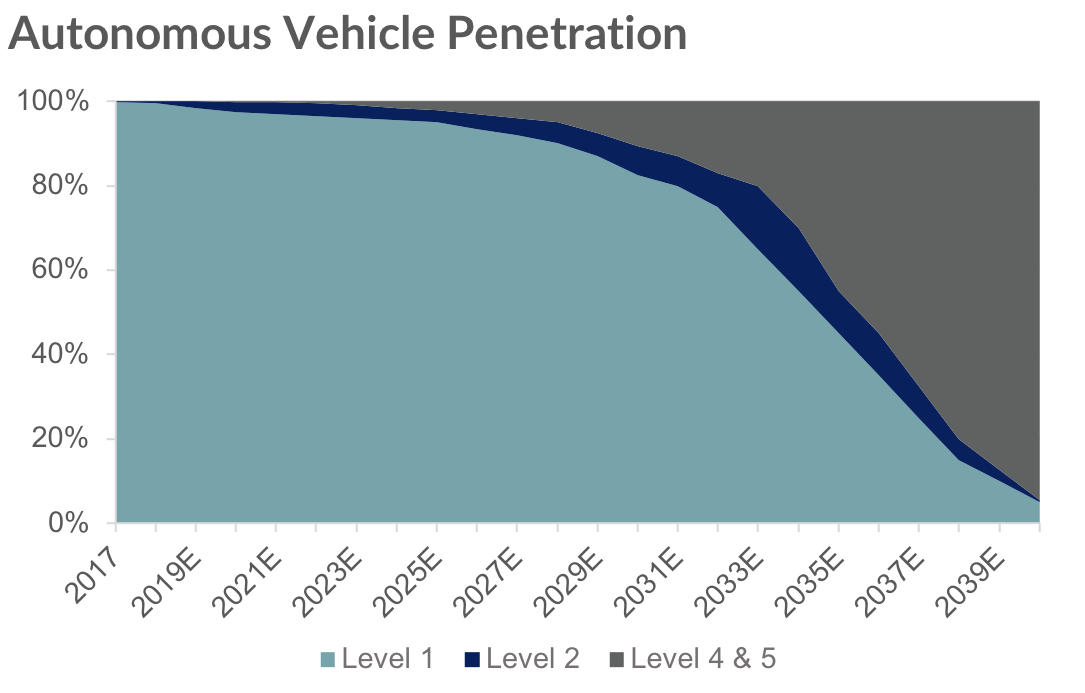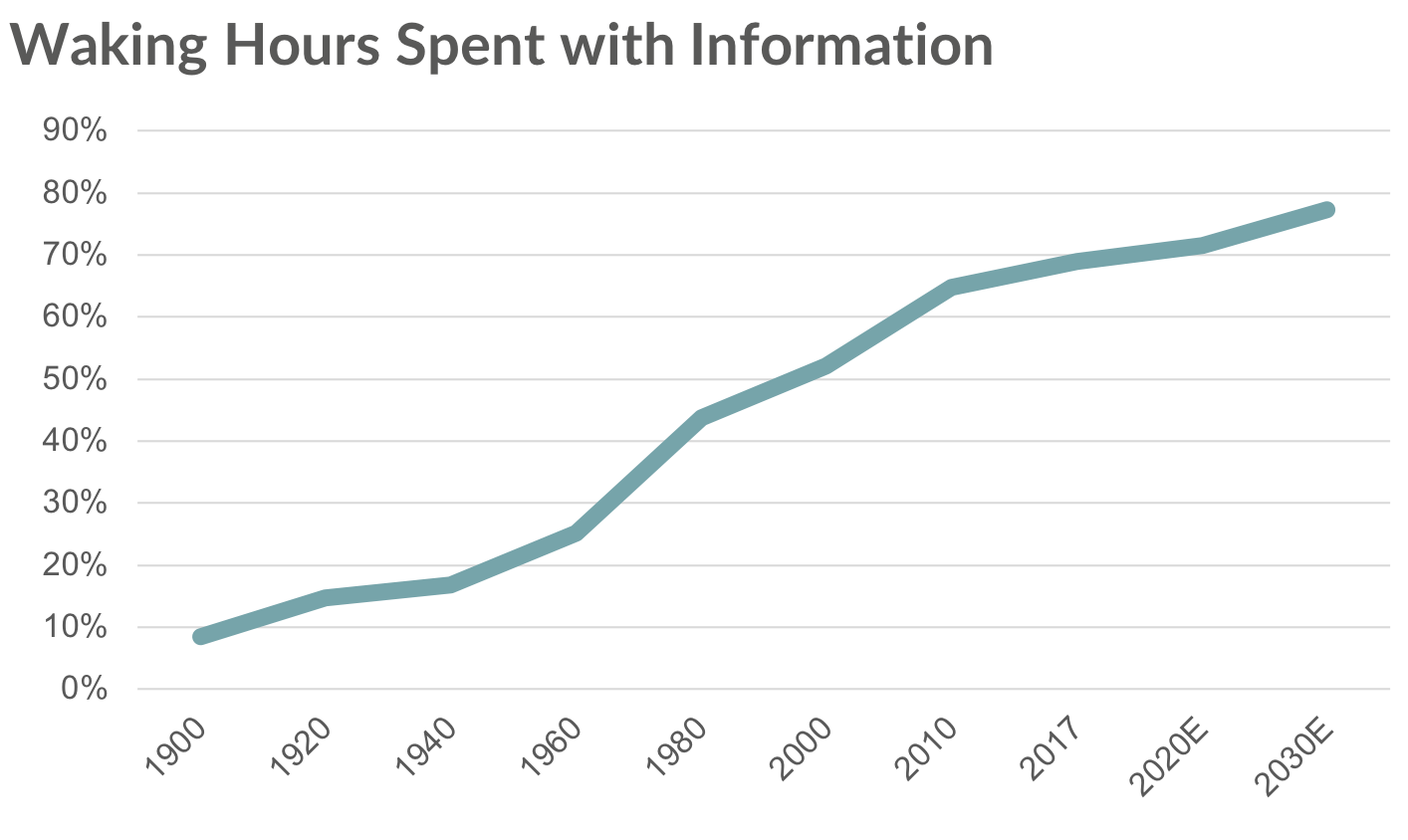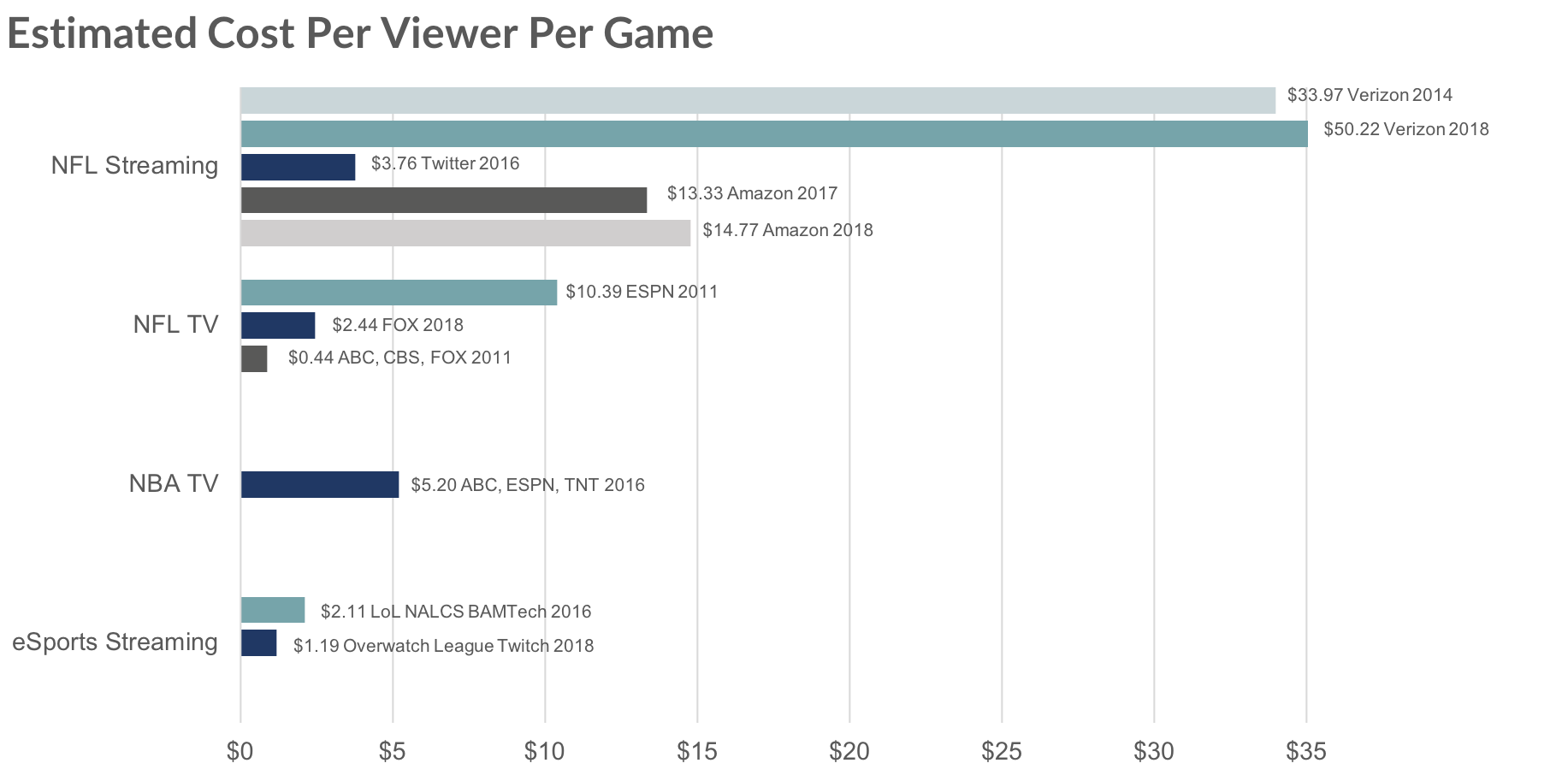We pride ourselves on contrarian curiosity. When that curiosity leads us to new conclusions, we change our minds. As part of that exploration, the areas that we find most interesting evolve over time. What was once frontier eventually becomes commonplace. We’re committed to updating our investment thesis as necessary through a living manifesto derived from our ongoing research process.
A little over a year and a half ago, we launched Loup Ventures and published our Manifesto outlining our vision of the future — a world more automated by AI and robotics and more experiential through VR and AR.
Since then, some things have changed, and some things have stayed the same. One thing has even changed and stayed the same: we’re bigger believers than ever in the emerging wave of innovation around automation and experience.
It’s no longer a question that the world is becoming more automated. We’re already seeing automation influence how we work, shop, and move. The efficiency we expect in those categories has also rubbed off on how we communicate with one another — we expect more meaning in less time.
As automation frees time for leisure, we’re finding new ways to create and play. Of course, all experience ultimately happens in the brain, and we’re seeing technology that interacts directly with the brain to change how we experience the world.
Our original vision to invest across AI, robotics, VR, and AR has evolved: We invest in frontier tech companies automating the world and building new ways to experience it.
- The Future of Work: We still think that 70% of jobs will be disrupted by automation long term, but it may take longer than we originally imagined.
- The Future of Retail: 1) Online commerce will slowly rise from ~10% today, closer to 55% long term; 2) Automated retail represents nearly a $50B opportunity; 3) We’re also bullish on empathic retail – uniquely human, personalized shopping experiences.
- The Future of Transportation: By 2040, we expect that over 90% of all vehicles sold will be “Highly” and “Fully” autonomous systems, classified as Level 4 and 5 automation, respectively.
- The Future of Communication: We spend 69% of our waking hours consuming information, so products that allow people to consume more meaningful information in less time will win.
- The Future of Play: In an automated world, we will be afforded more time for leisure and play. In our view, the interactive nature of gaming will heavily influence the future of play.
- The Future of the Brain: Neurotech allows us to manipulate the brain’s signals, enabling us to directly influence intelligence and experience – augmenting human capability.
The Future of Work
In our first manifesto, we talked about the potential for 70% of jobs to be disrupted by automation long term. We still think that will be the case, but it may take longer than we originally imagined. We also have a brighter view on the creation of new jobs uniquely suited for humans. Net-net, while labor will certainly be disrupted by automation, jobs will exist for humans in the long-term future. As such, we see four core opportunities in the future of work: human-in-the-loop, human-as-AI, pure AI, and pure human.
For at least the next decade, there will exist a gap between what enterprise customers want AI to do and what AI can viably do. To that end, we embrace the reality that humans, in many ways, are robots. We’re all full of habits (programs), biases (programs), and skills (programs). Humans will serve as the most efficient “AI” while we develop and train purely machine-driven forms. This is where the first two future of work opportunities exist.
- The human-in-the-loop opportunity enables humans to be augmented by machines to perform tasks more efficiently. For human-in-the-loop, machines may be able to perform the majority of a task but need humans to finish it or take over in complex situations. An example is a call center that uses AI to handle basic requests, but turns over difficult situations to a human, or an autonomous vehicle that turns over control to a human, either in the vehicle or remotely, to navigate challenging environments.
- The human-as-AI opportunity creates a rigid set of instructions or processes for humans to follow as if they were a machine. There are certain tasks that are just more easily and efficiently done by humans. At least for now. For things like calendar management there are personal and business nuances that must be understood to do the task well, events that aren’t on one calendar or another, people that should be ignored or deflected, control over how events are grouped, preferred meeting locations, etc. For a machine to understand the all the nuances of scheduling is difficult. It’s not impossible, it’s just more practical today to have a human do it if you want it done well. Another example is a human using augmented reality to get instructions from a machine to perform a specific task. Both of these opportunities are most likely to impact entry level workers.
- The pure AI opportunity is automation as we all think about it — robots handling a task completely. Robots are especially well suited to perform repetitive tasks, both physical and digital, because they don’t need breaks and can work faster and with more precision than humans. Manufacturing, agriculture, and industrial applications are all beginning to use fully autonomous robots that monitor inventory levels, pick produce, and move vehicles. See more of our work on robotics for details.

As the pure AI category slowly replaces jobs created by the first two opportunities, the aforementioned 70% job disruption will become a reality. While some observers fear this disruption as permanent, we see a different future where both blue- and white-collar skilled jobs disappear while new jobs emerge.
Pure human jobs will be driven by uniquely human capabilities: creativity, community, and empathy. These are the long-term future of human work because they are outputs that only a human can authentically deliver. Creative pursuit of the arts will become more valuable as work and play merge. Communities can only be led by human beings. Empathic, human-led customer service will be a true differentiator for businesses that are otherwise automated. If we do it right, we should be able to create a world where robots perform tasks for which they are optimally suited, and humans will do the same. The future of work is bright, not bleak; especially for humans.
The Future of Retail
We see the future of retail in three buckets: online commerce, automated retail, and empathic retail.
- Online Commerce still makes up only ~10% of total commerce excluding gas and groceries. We estimate that number could eventually reach 55%. As crazy as it may seem, we’re still in the early innings of online commerce. 63% of Americans live within 20 miles an Amazon fulfillment center or Whole Foods store, according to data from Piper Jaffray. Amazon’s network is impressive, but not good enough. Tighten the range to 5 miles and the addressable customer base drops to just 12% of Americans. Same day delivery isn’t solved yet. It’s why we still see $35 minimums and $5 on-demand delivery fees. There remains an opportunity for online retailers to broaden the distribution network and improve their same day delivery solutions. In our view, more efficient same day delivery will drive the next step change in online commerce growing as a percentage of wallet share. The biggest challenge for online retailers is, unsurprisingly, figuring out how to compete with Amazon. Offerings built around proprietary brands and products seem to have the best chance, and we’re likely to see a continued emergence of these types of brands that try to own a large niche.
- Automated Retail took a big step forward with Amazon’s Amazon Go store. While Amazon may have created a great experience with Go, the technology is expensive and impractical to apply to retail formats larger than a convenience store; however, anywhere retailers compete primarily on price, automation must be the future. Reducing employee overhead will enable lower prices for consumers and, if the technology is applied correctly, a better experience. In 2016 there were 3.5 million cashiers in the U.S., according to the Department of Labor, with an average salary of $13,574 (Data USA). That represents a nearly $50 billion opportunity in cashier-less retail. Of those 3.5 million cashiers, 323,000 are convenience store or gas station employees, 9% of the cashier workforce. We expect c-stores to be the first category to undergo the dramatic shift to automated retail.
- Empathic retail ties directly to the core human traits that represent the future of work. Of the three future of retail categories, empathic retail is the most nascent and also the most open for innovation. For offline retailers that wish to compete on a basis other than price, their premium will be driven by the experience they provide shoppers.
Humans, not robots, are likely to deliver the greatest differentiated experience. There’s a quality of connection when your favorite retail locations know who you are and what you like that’s hard to replicate. We think great customer service delivered by humans will become the most valuable differentiator in an empathic retail space and be augmented by AI and robotics, but not replaced by them.
The Future of Transportation
We see a future where humans not only won’t have to drive but won’t be allowed to drive. Admittedly, we’re still several decades from achieving that future, but autonomous transportation feels, in many ways, like a foregone conclusion. Billions of dollars have been invested in autonomous driving platforms and we’re beginning to see early solutions come to market like Tesla’s Autopilot (level 2 enhanced ADAS) and Waymo (level 4), but it will likely take billions of dollars more before we reach a fully autonomous transport future. See our Auto Outlook 2040 for details.

Despite the amount of investment and attention on autonomous vehicles, our infrastructure is well behind our vehicles. Smarter energy grids, EV charging, roads, and maintenance will all be core components of our autonomous future. Governments seem to be interested in investing in these technologies but will be slow to act. Companies that find ways to limit upfront costs to cities and push the majority of monetization to private players in the transit ecosystem are most likely to thrive.
Experience will be a major derivative benefit from the move to autonomous transit in several ways. First, since humans will be free from the task of driving, they will have more time to engage in communicating with others, creative work pursuits, or other play. We’ll also recoup lost time spent in traffic. Second, the many dangers of the road, namely distracted driving, will be eliminated. Third, vehicle ownership will transform, which may free dollars up for other discretionary spending. Fourth, urban and suburban centers will change. Vehicles, whether corporately or personally owned, will stay maximally utilized by fleets. Parking should be a thing of the past, which will allow streets to be lined by trees and pedestrians. And people on scooters. And delivery robots.
The Future of Communication
Meaning divided by time. That is our simple fundamental thesis on how the future of communication will evolve. Products that allow people to consume more meaningful information in less time will win. Products that allow us to reduce holistic noise and allow us to tell more engaging stories will win.
Information is plentiful. We spend more time with information than ever before, from more sources than ever before, including social media and professional content. Thus, content has to be extremely compelling to break through in our busy lives. The richer, more creative, and more compelling the content (relevance is an everlasting imperative as well), the more we will want to consume it. See our piece on the future of information consumption for details.

Much of the innovation over the past decade has happened for asynchronous communication tools from Twitter to Instagram to Snapchat; platforms where real-time engagement isn’t necessary or expected. Synchronous communication tools have, by comparison, languished. While we have multiple video conferencing tools like FaceTime, Hangouts, Skype, and Zoom for synchronous communication, they haven’t transformed the way we interact on the same order as the aforementioned asynchronous tools. There’s still an opportunity for a step-function improvement in synchronous communication that will shift users toward live and real time.
This doesn’t mean we’re done innovating in asynchronous communication either. Tools for both mechanisms will continue to evolve by leveraging product features like time restrictions, non-fungible content enhancements, combining multiple content formats, and, of course, augmented reality. All of these mechanisms enhance meaning/time, which enhances our experience as consumers.
The Future of Play
Humans love competition and entertainment. That’s why we watch sports. That’s why we love games. With more time available for leisure in an automated world, we will be afforded more time to engage in play.
As we’ve already witnessed with the rise of eSports, the future of play will not be beholden to traditional sports. Gaming will be the basis for much of the evolution of play. Like traditional sports, games are accessible to all, but mastered by few, and anywhere there is a skill to be mastered, there is beauty. We watch in awe as Ninja plays Fortnite just as we watch Lebron play basketball.

The interactive nature of gaming will influence the future of play. ‘Live’ and ‘sports’ have always gone well together. We want to see greatness as it happens, not in a replay, to gain the social credit of “being there.” Live streaming combines the excitement of being there with a unique ability to engage with fans in ways not possible in traditional sports. We see this combination as the blueprint for new sports and other forms of play to amass large fan bases.
While gaming will be a large component of the future of play, passion activities like music, art, and other forms of human creativity will also enrich and entertain us. Platforms will emerge to not only encourage, but also financially reward participants as play becomes work. See more of our work on gaming for details.
The Future of the Brain – Neurotech
The human brain is the basis for both intelligence and experience. Neurotech allows us to understand, and even manipulate, the brain’s signals, allowing us to directly influence intelligence and experience. Our focus on neurotech could be considered the future of the future of experience, since it will have a profound impact on how we engage with the world through both clinical and consumer applications.
On the clinical side — typically invasive/implantable medical devices — our growing ability to simulate sensory experience and stimulate motor function can solve previously unsolvable problems. We have, for example, already witnessed groundbreaking work to restore motion in paralyzed patients. The next frontier is sensory information: we’ve heard about efforts to restore high-resolution vision to patients with retinal degeneration. A growing number of devices on the market treat pain through neurostimulation rather than pharmaceuticals.
On the consumer side — exclusively noninvasive devices today — we can control things like video games and cars with our minds. We can learn new skills more quickly through specialized neurofeedback devices. And we’ve only just begun.
In the longer-term future, neurotech could truly augment what it means for us to be “human.” Ideas exist for memory augmentation and brain preservation. We expect eventually we’ll find a way to simulate consciousness on a computer. While these probably require decades or more of technological and societal advancements, they illustrate a simple reality that drives our neurotech thesis: The brain is the key to all things in life, and to life itself. See more of our work on neurotech for details.
Conclusion
In our original manifesto, we outlined a future of vast automation and limitless, life-like experience; a future that would make Arthur C. Clarke proud. We still believe in that future and the path is slightly clearer than before. Some fear our vision for the future because progress always brings new challenges, but our future is bright. Human desire drives innovation, adaptation, and survival.
We called it utopia; however, utopia, like many things in life, is relative. Utopia today raises expectations such that it isn’t utopia tomorrow. We may only approach utopia every now and then, but it’s always the journey that makes the destination worth it. Loup Ventures is excited to pioneer that journey.
By Doug Clinton with Gene Munster and Andrew Murphy
Disclaimer: We actively write about the themes in which we invest or may invest: virtual reality, augmented reality, artificial intelligence, and robotics. From time to time, we may write about companies that are in our portfolio. As managers of the portfolio, we may earn carried interest, management fees or other compensation from such portfolio. Content on this site including opinions on specific themes in technology, market estimates, and estimates and commentary regarding publicly traded or private companies is not intended for use in making any investment decisions and provided solely for informational purposes. We hold no obligation to update any of our projections and the content on this site should not be relied upon. We express no warranties about any estimates or opinions we make.
